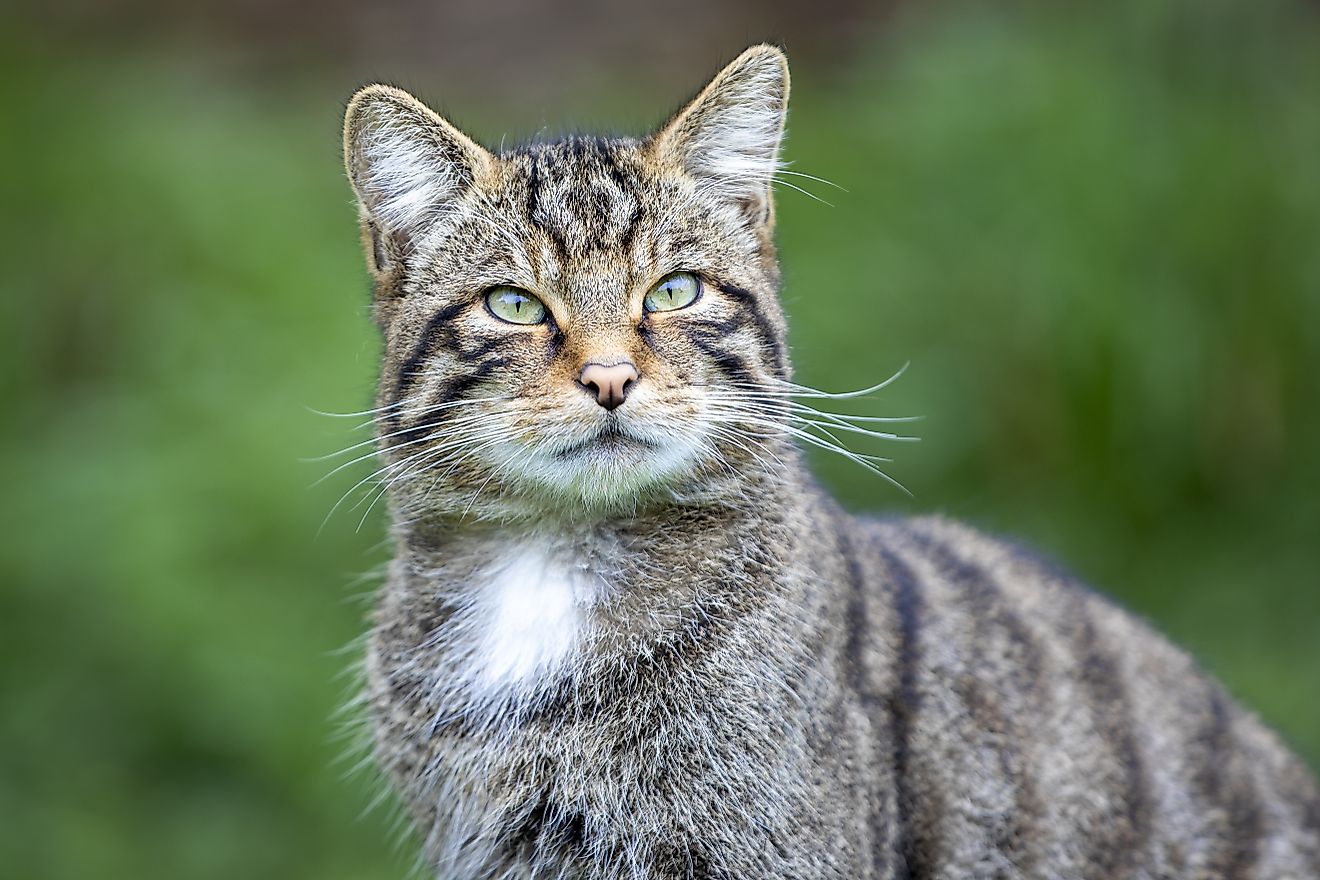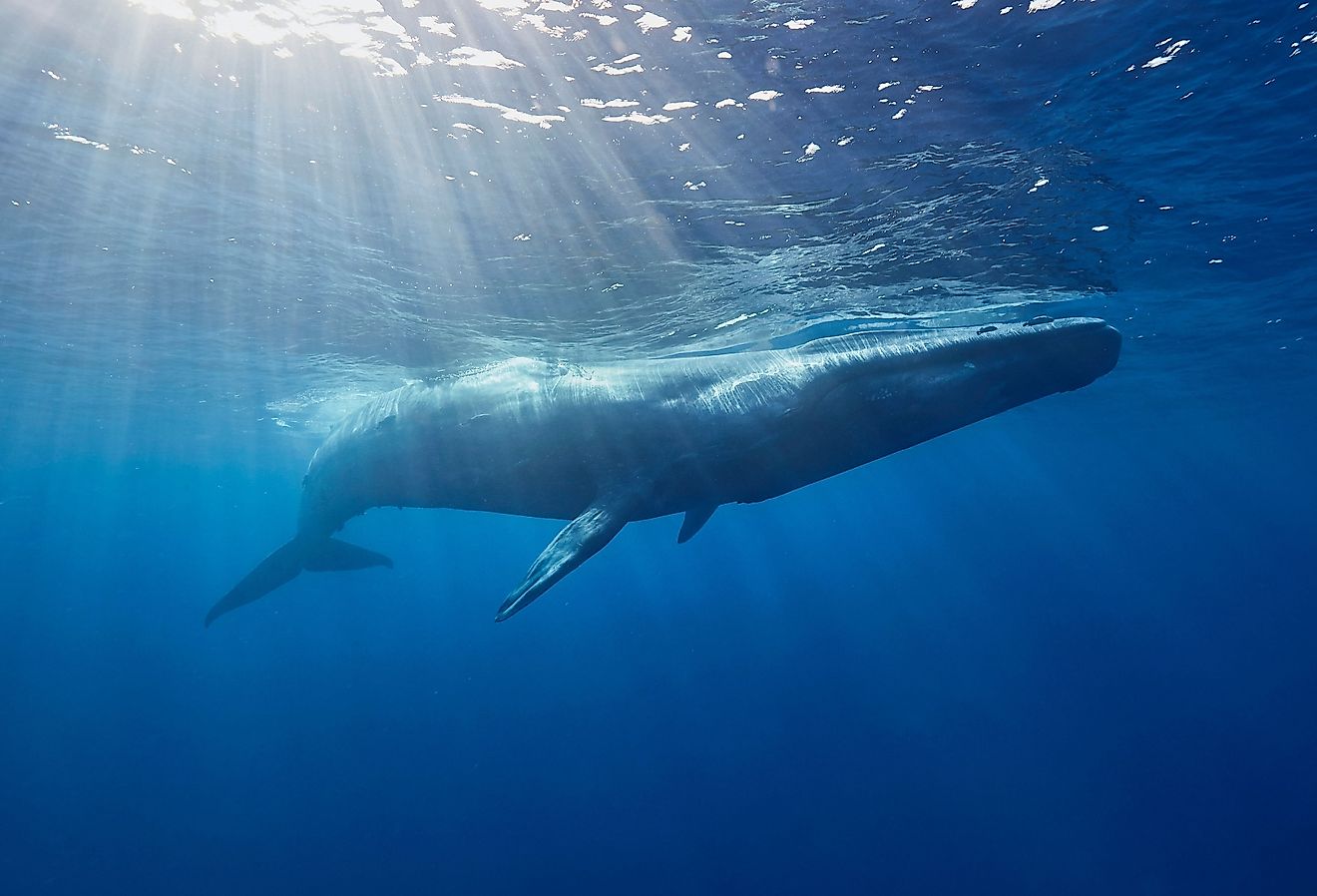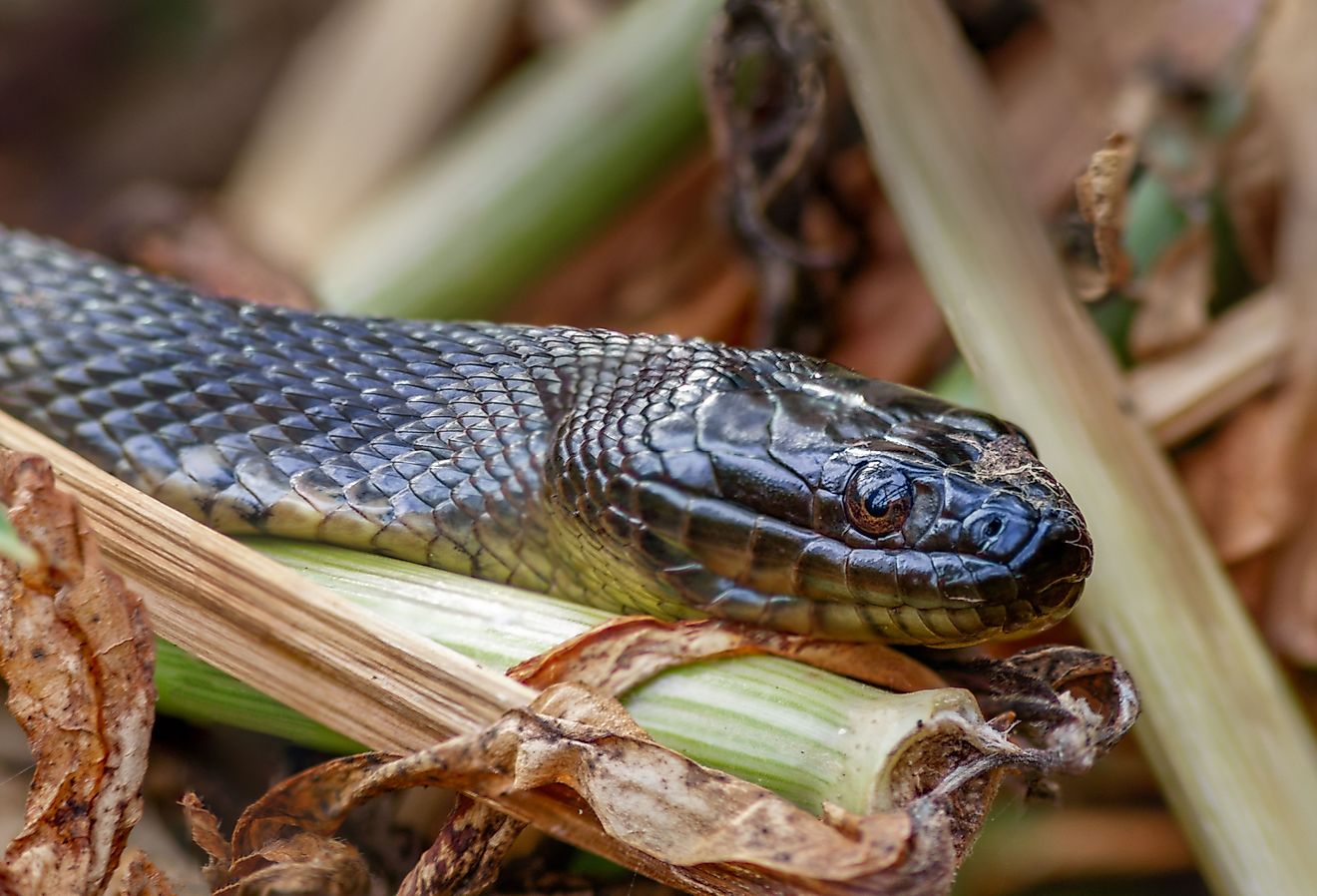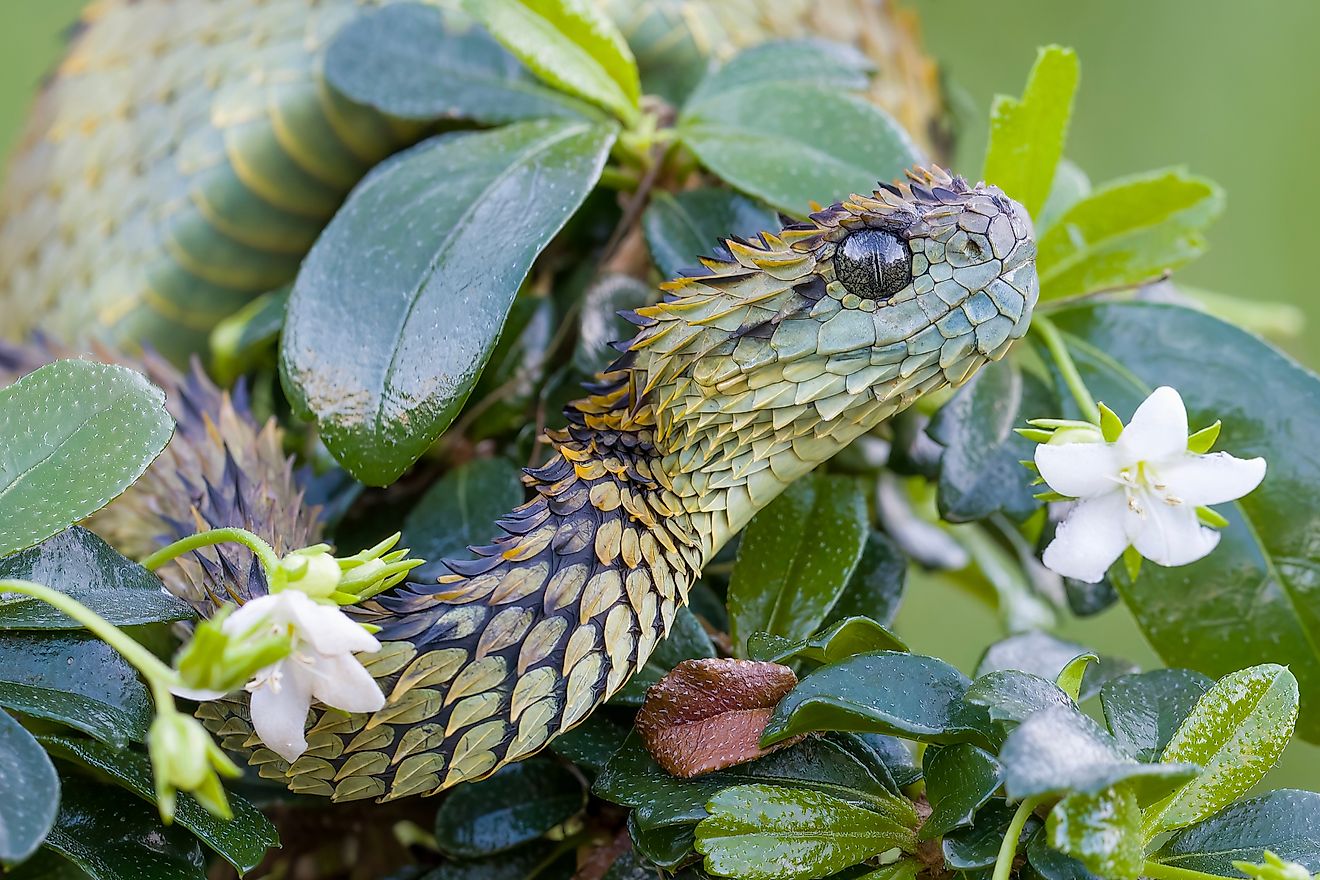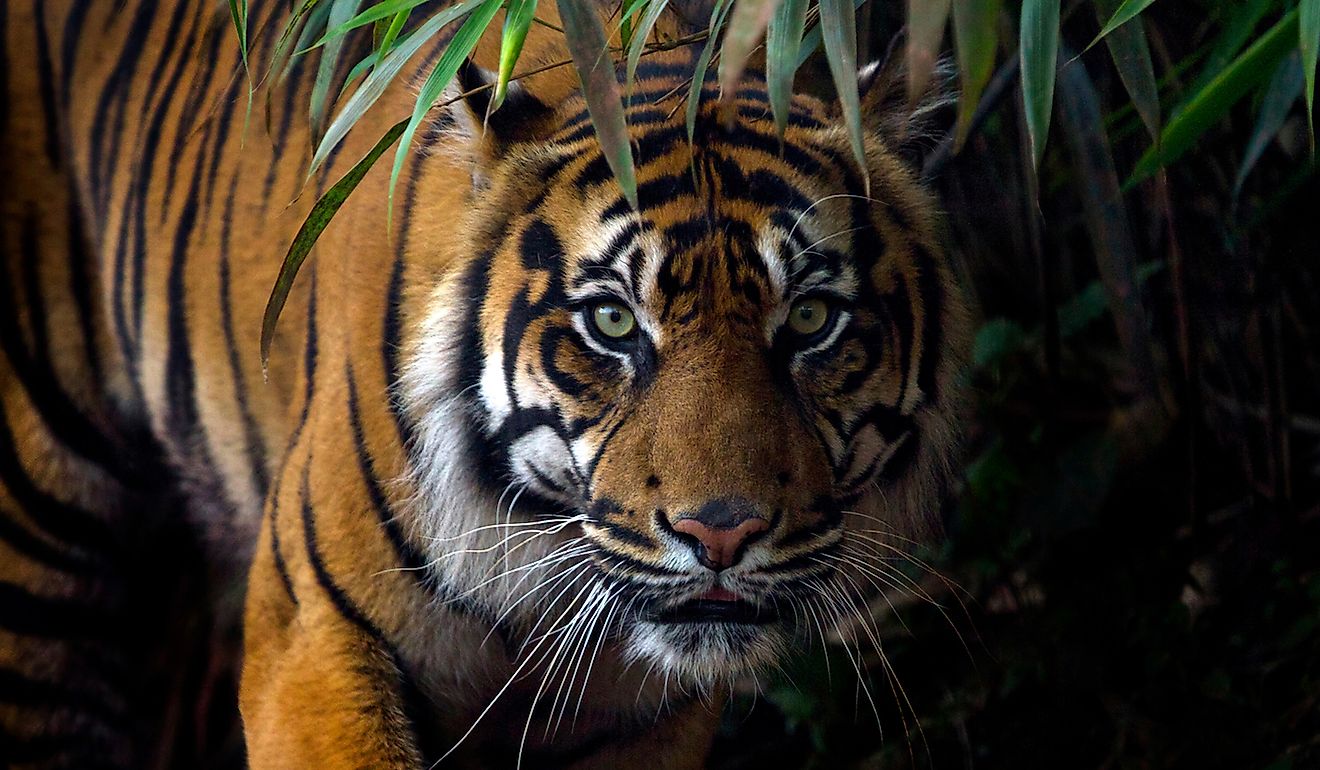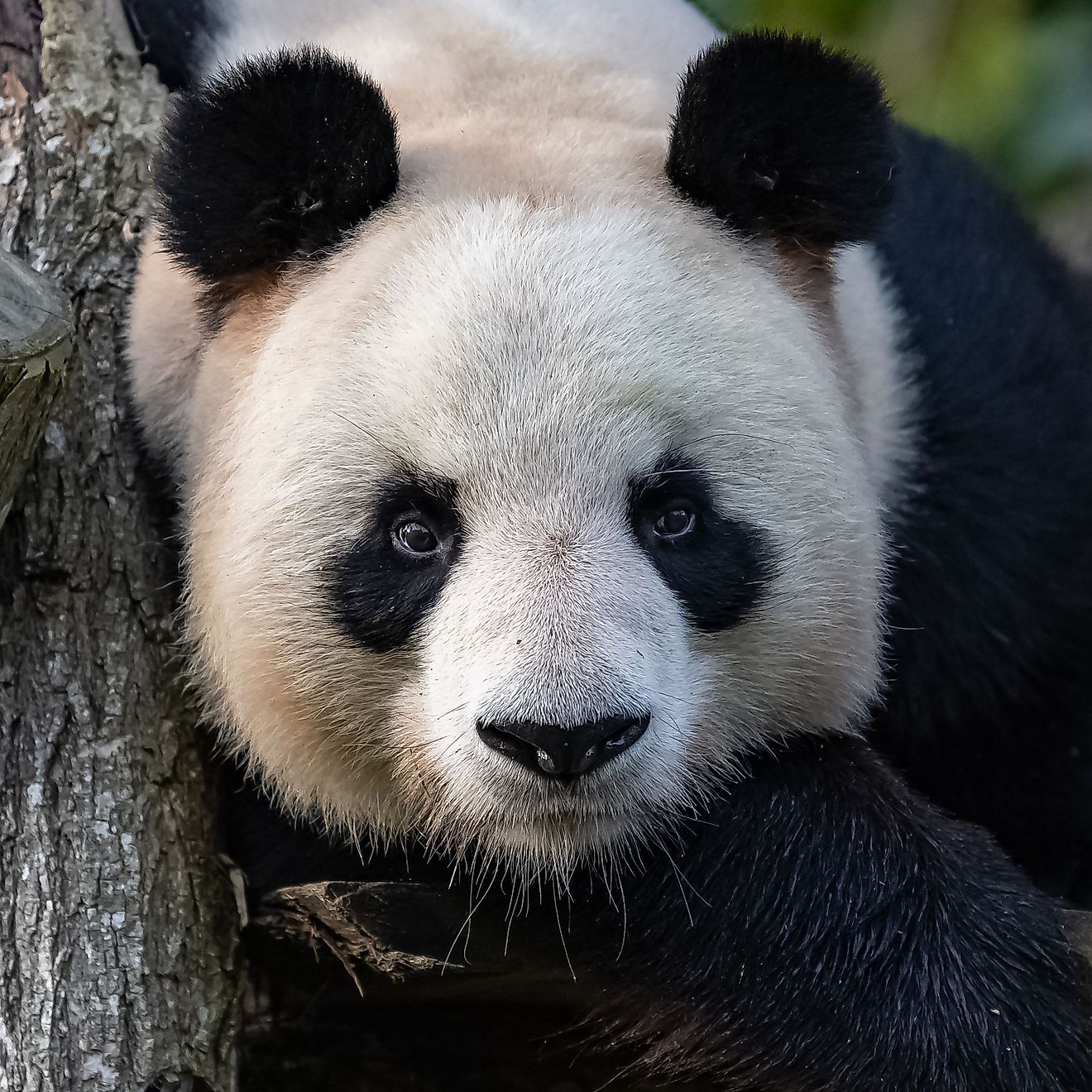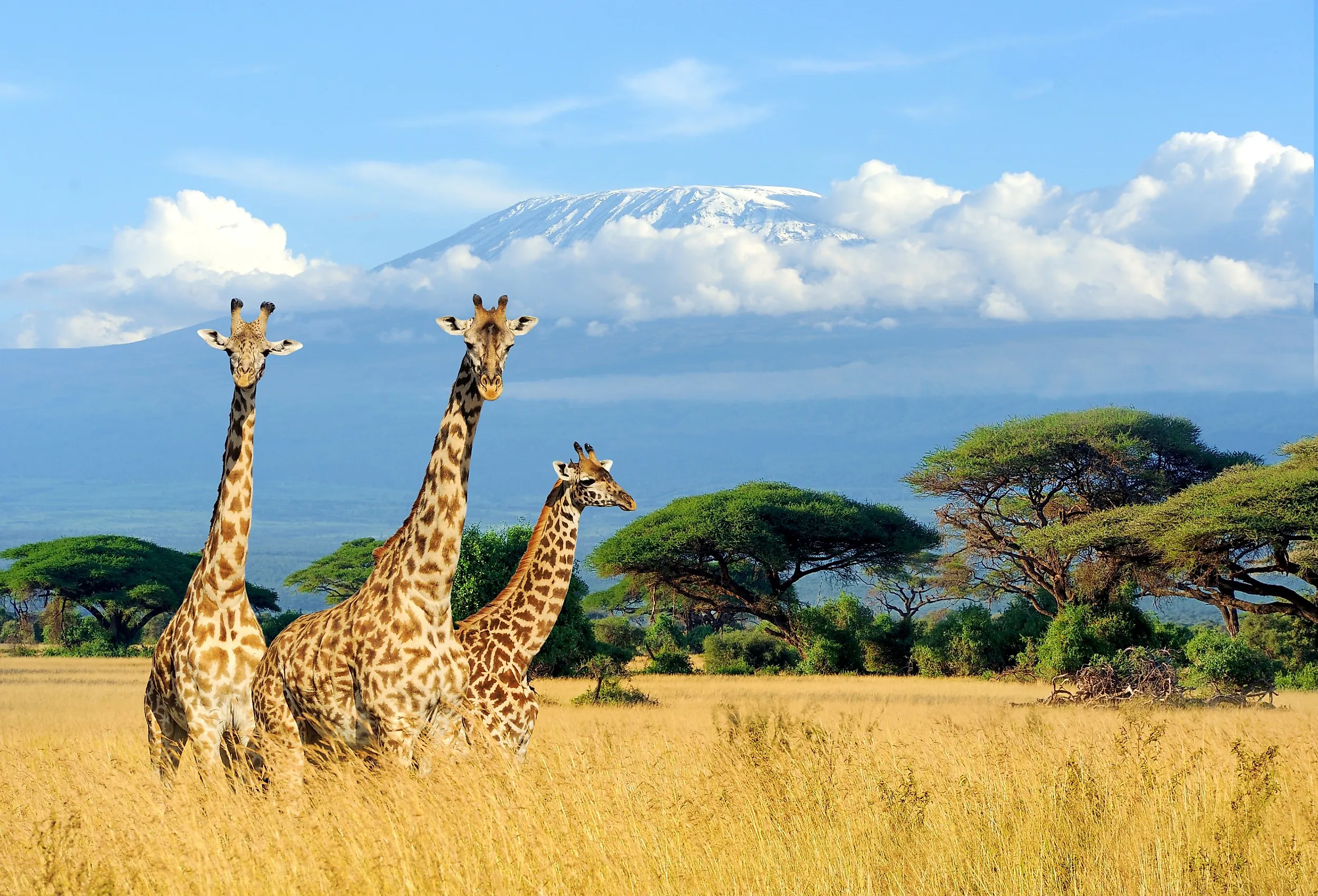
The Long-Neck Truth About Giraffe Bones
The enigmatic giraffe is a terrestrial animal and the tallest one of its kind on Earth. Giraffes are also hoofed mammals predominantly found in Africa and are the largest ruminants on the planet.
Everything about the giraffe is ‘larger than life’, including its golf-ball-sized eyes. Classified under the family Giraffidae alongside the okapi, the giraffe is easily identified by its long legs and even longer neck. What is truly remarkable is that this elongated neck has seven vertebrae, the same number as a human neck, but each bone exceeds 25 cm in length.
The Size of the Average Giraffe Neck
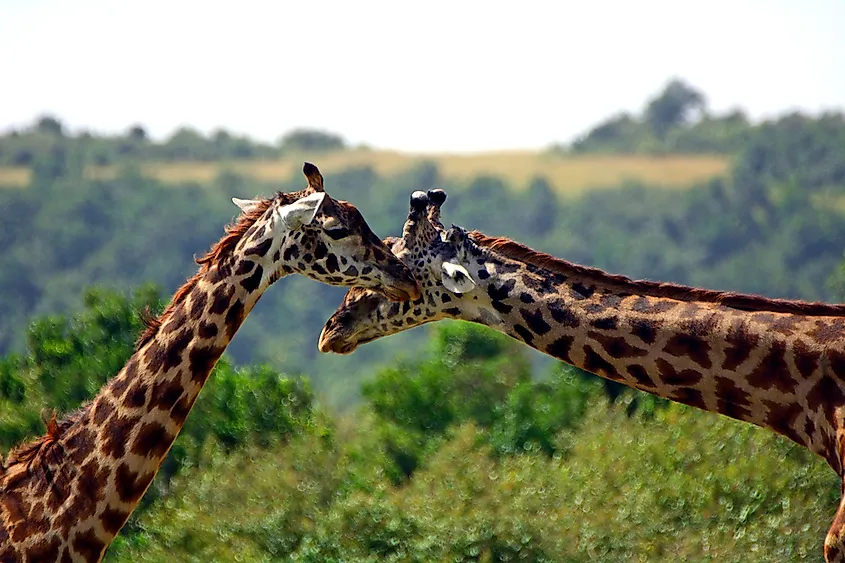
Female giraffes grow up to 14 feet in height, while males can become as tall as 18 feet. This means giraffe necks extend as high as most second-story windows.
A giraffe’s neck can weigh up to 600 pounds and grow 6 feet long. This is an incredible feat considering that giraffes and humans have the same number of cervical vertebrae: seven.
The difference is that each vertebra in a giraffe's neck is elongated, measuring up to 25 centimeters long. The elongated bones are connected by ball-and-socket joints, making it easy for a giraffe to maintain its 360-degree range of motion.

It takes strong musculature and specialized ligaments to support such a long neck. The nuchal ligament, which is surprisingly elastic, extends from the back of a giraffe’s skull to the thoracic vertebrae. This structure essentially allows the giraffe to hold up its neck and head.
Furthermore, the spinous processes of the thoracic vertebrae are also elongated, providing enough surface area for muscle attachment. This attachment is crucial for smooth neck movement and stability. These processes are called lever arms, which allow muscles to attach and pull on the spine as the giraffe moves its neck and keeps its posture.
Why Has the Giraffe’s Neck Evolved?
Scientists have never truly agreed on why the giraffe’s neck evolved. As such, the debate continues in 2025 on the back of two primary hypotheses.
Competing Browsers Hypothesis
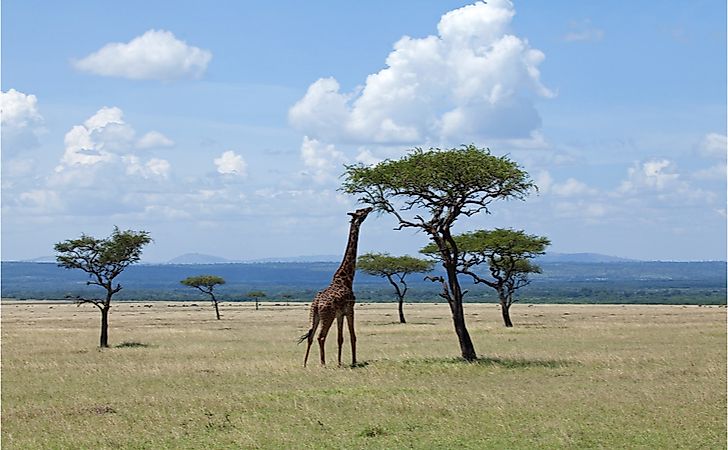
The first hypothesis is rooted in Charles Darwin’s natural selection and states that giraffes evolved longer necks to reach foliage that other herbivores could not. In other words, their long necks instantly reduced the ever-increasing competition for food.
Feeding on higher branches gives giraffes a survival advantage in modern times, essentially a ‘survival of the fittest’ scenario.
Another part of this theory states that female giraffes tend to get pregnant when they are four or five years old. Therefore, a pregnant giraffe’s nutritional demands may also have driven the evolution of long necks as they would want to reach deeper into the trees to reach the most nutritious leaves.
But, ongoing observations revealed that not all giraffes extend their necks far enough to reach the top branches. Instead, they tend to feed at shoulder height. This behaviour suggests that feeding advantages may have played a role in neck elongation, but may not be the sole driver.
Necks-for-Sex Hypothesis
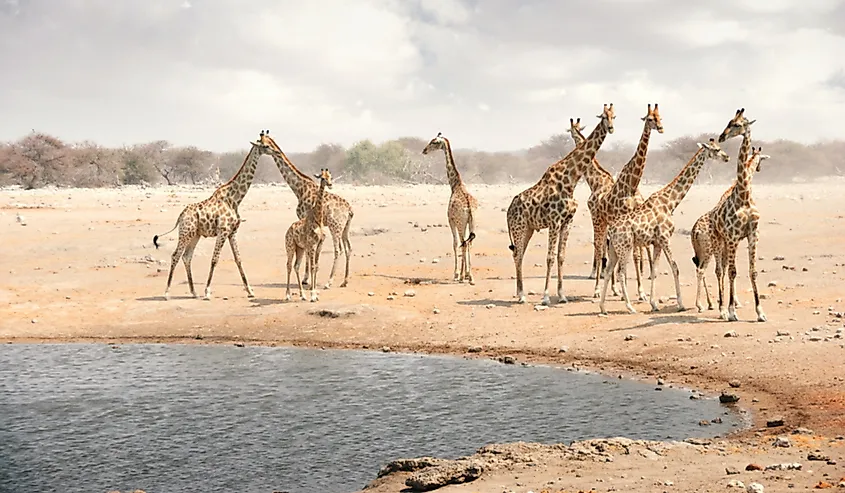
A recent hypothesis states that a so-called necks-for-sex phenomenon could have driven the evolution of long giraffe necks. This means males swing their necks into each other to ‘prove’ strength. If a male with a longer neck engages in neck sparring, they may be more successful, which results in reproducing.
Their ‘long-neck gene’ is more likely to be passed on to the male giraffe’s offspring.
The hypothesis is based on the prediction that male giraffes always have longer necks than females. However, it is not only the necks that are longer—male giraffes are up to 40% bigger than females overall.
This is why it was surprising for a team of biologists from Penn State University to discover that female giraffe necks are proportionally longer than those of males. The team realized this while studying Masai giraffes.
The proportionality finding supports the hypothesis that females extend their necks deeper into trees instead of higher. But, even so, the necks-for-sex hypothesis still ranks higher with experts when it comes to the reason for long neck evolution in giraffes.
Adaptations That Allow Giraffes to Balance Form and Function
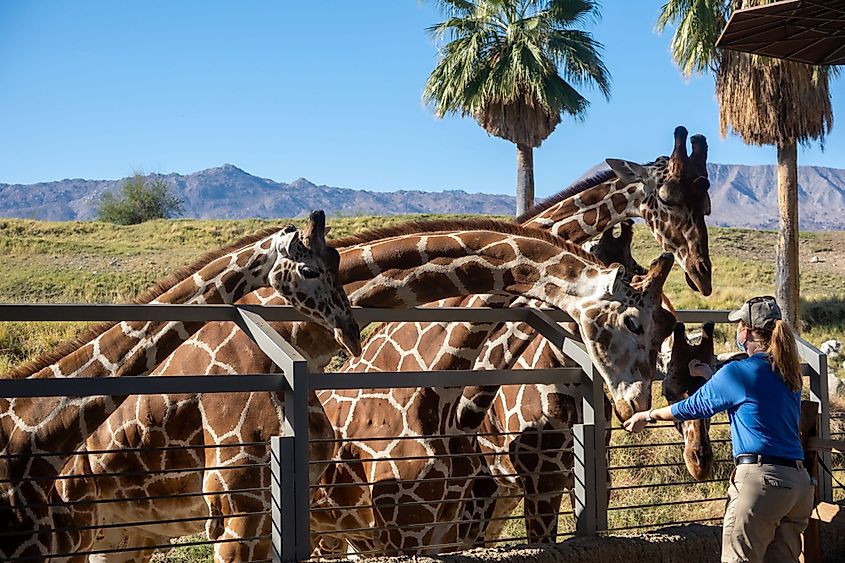
Besides evolving for food or sex, the giraffe’s elongated neck presents biomechanical challenges, particularly when maintaining structural stability and blood flow to the brain. To overcome these challenges, giraffes have evolved several adaptations.
Giraffes have incredibly strong hearts that can generate twice the blood pressure of other large mammals. This heart adaptation ensures giraffes continuously have adequate blood flow to their brains, which are high above their hearts. Giraffes also have specialized valves present in their jugular veins. These valves prevent blood from flowing backward. Additionally, tight skin and connective tissue maintain pressure when a giraffe moves its head.
The muscles supporting a giraffe’s neck are concentrated at the base. This reduces the weight burden on the upper neck, allowing the giraffe to move its neck freely.
These adaptations continue to work together to manage all the physiological demands inevitably imposed by a giraffe’s height and neck length.
Genetic Factors That Influence Neck Elongation
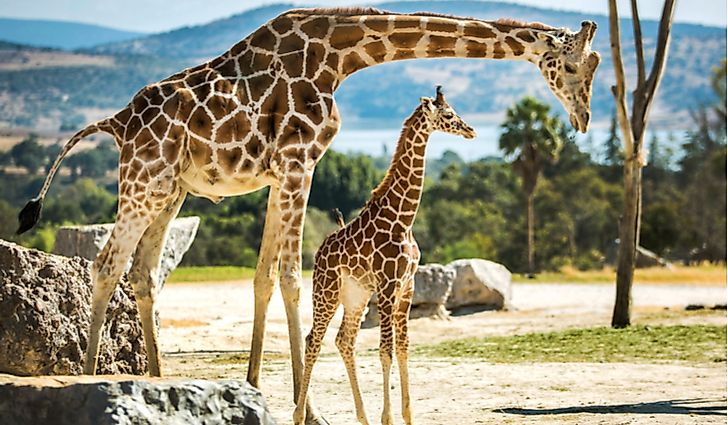
Genomic studies have identified around 70 genes associated with skeletal development and cardiovascular function. These studies compare giraffes to the okapi, revealing that the genes have significantly changed.
Moreover, these genetic adaptations likely contribute to a giraffe’s long neck and ability to maintain blood flow to the brain.
Some of the genes also control both cardiovascular development and skeletal development. This suggests that the giraffe’s stature and cardiovascular system evolved together via gene changes.
Stages of Elongation and Fossil Evidence
Fossils and comparative anatomy reveal that the evolutionary journey of a giraffe’s long neck spans millions of years.
Initial Elongation and Early Ancestors
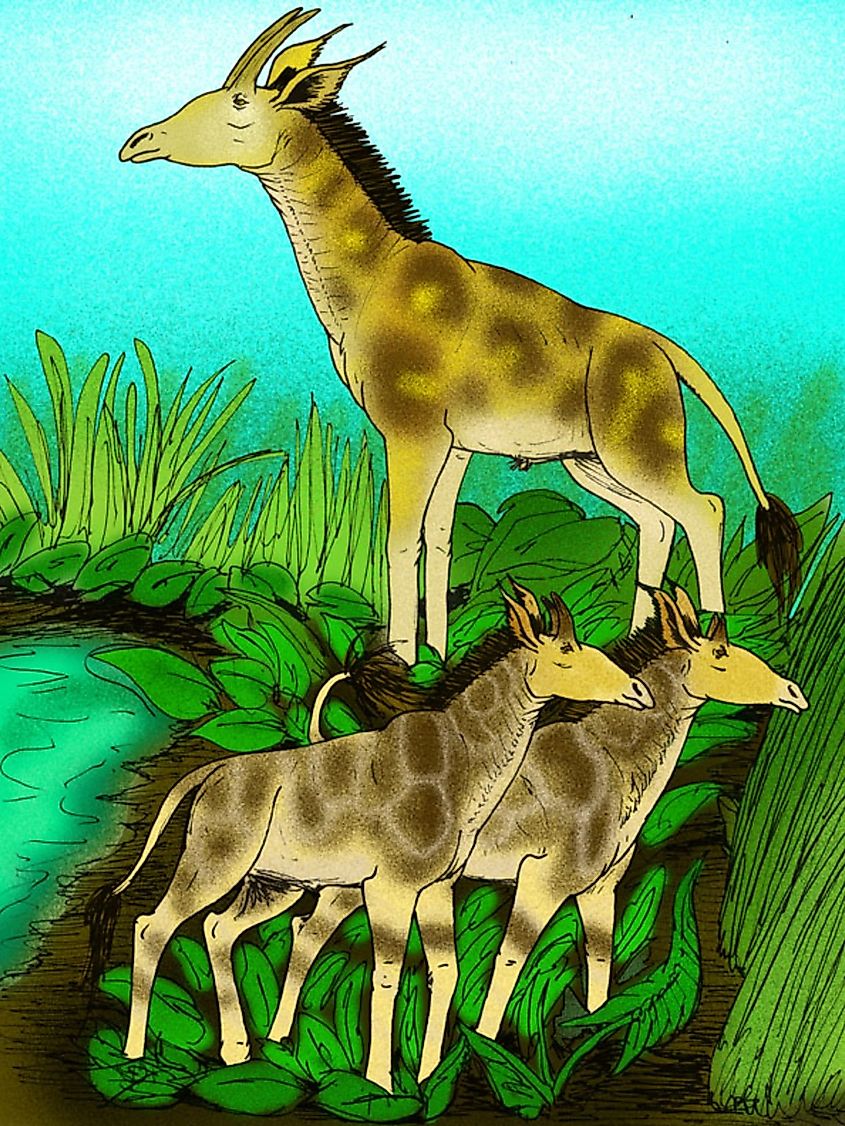
One of the earliest known giraffid ancestors, Canthumeryx, lived around 17 million years ago. Fossil records show that this species’ neck was moderately elongated, indicating neck lengthening had already started early in the giraffe lineage.
Species that came after, such as Samotherium, lived around 7 million years ago and showed further elongation. The elongation was particularly evident in the front portion of the cervical vertebrae, suggesting a two-part process. The front part of the neck bones lengthened first, followed by the back portion around 1 million years ago.
Transitional Forms and Modern Giraffes
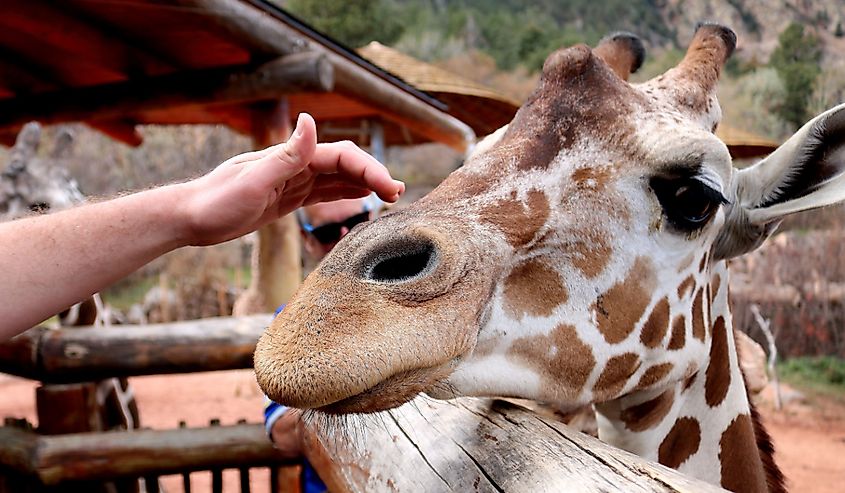
Fossils of species including Bohlinia and Giraffa sivalensis represent transitional forms between early giraffids and modern giraffes. These species have intermediate neck lengths and structures, providing more insights into the gradual elongation process.
Around 1 million years ago, giraffe necks evolved to modern proportions. This coincided with environmental changes that left open grasslands where forests once stood. The habitat shift is well studied and may have influenced feeding behaviors, further driving neck elongation.
Short-Necked Giraffe Relatives
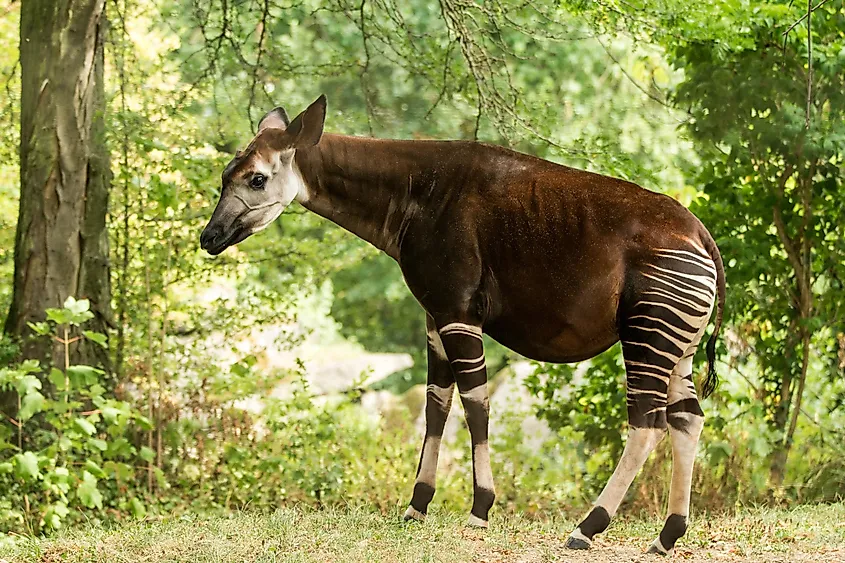
Not all giraffids followed the neck elongation journey. Species like Giraffokeryx and today’s okapi have much shorter necks. This suggests that different ecological niches and behaviors influenced their evolution.
One of the best examples is Discokeryx xiezhi, an extinct giraffoid from the early Miocene epoch. Disockeryx had a short neck and a thick skull adapted for head-butting. Its cervical vertebrae and skull joints were uniquely structured to absorb high-impact collisions. In this case, sexual selection through combat played a major role in the species’ evolution.
The unique fossil record proves that the giraffe’s long neck did not evolve linearly. Instead, social behaviors, feeding strategies, and environmental factors played a major role.
The Giraffe Neck is a Fascinating Evolutionary Tale
The giraffe’s long neck points to the complexity of evolutionary processes. Both natural and sexual selection factors likely shaped these processes. Still, the research into this evolutionary tale has not been concluded. Experts will continue to expand their studies into giraffe biology and evolution to improve our understanding of how extraordinary animal traits arise in the natural world.
